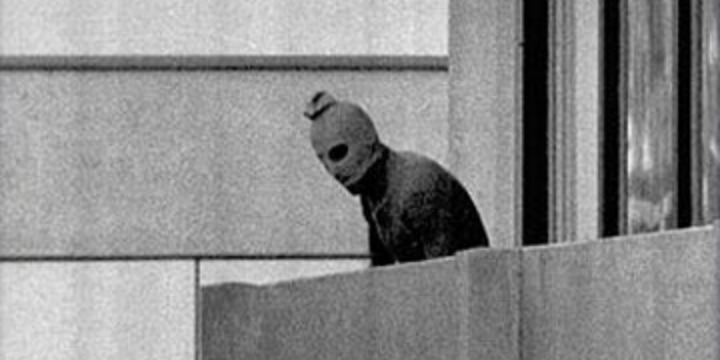
 Czy terroryści z Zachodniego Brzegu są już tak samo niebezpieczni jak ci, którzy byli w Strefie Gazy?
Czy terroryści z Zachodniego Brzegu są już tak samo niebezpieczni jak ci, którzy byli w Strefie Gazy?
Seth J. Frantzman
Tłumaczenie: Małgorzata Koraszewska
Te ataki powietrzne są częścią szerszego trendu na Zachodnim Brzegu, aby poradzić sobie z zagrożeniem pochodzącym od grup terrorystycznych, które gromadzą się i zwiększają swoją aktywność w regionie. Komórki terrorystyczne rozbudowują infrastrukturę, wzmocnioną obecnością przemycanych karabinów, które zalały części Zachodniego Brzegu w ciągu ostatnich dwóch lat.
Palestyńskie media poinformowały, że w ataku na Nur al-Szams jednym z zabitych terrorystów był Dżibril Dżibril, który został uwolniony w listopadzie 2023 r. w ramach porozumienia o uwolnieniu porwanych zakładników, na mocy którego Izrael uwolnił palestyńskich więźniów w zamian za kobiety i dzieci przetrzymywane jako zakładnicy w Strefie Gazy.
Podczas gdy Siły Obronne Izraela odnoszą sukcesy w Strefie Gazy, zagrożenie ze strony Zachodniego Brzegu rośnie
Jest to ważne, ponieważ pokazuje ogólny trend w północnej części Zachodniego Brzegu: zagrożenie terrorystyczne rośnie. W międzyczasie IDF odnosi sukcesy w walce z Hamasem w Strefie Gazy, gdy jednostki IDF docierają do obrzeży Deir el-Balah.
Na przykład, IDF powiedziała w tym tygodniu, że „żołnierze 7. brygady nadal rozszerzają działalność operacyjną na obrzeżach Deir el-Balah. W ciągu ostatnich dwóch tygodni żołnierze wyeliminowali dziesiątki terrorystów, a w operacjach powietrznych w południowej Strefie Gazy uderzono w ponad 100 celów terrorystycznych”.
Tak więc zagrożenie terrorystyczne jest powoli ścierane w Gazie niczym drewno papierem ściernym. Przykładem może być niedawny nalot na ten region, kiedy to siły IDF z 202. batalionu „zlokalizowały amunicję, pociski przeciwpancerne, kamizelki wojskowe i noże przechowywane obok łóżeczka dziecięcego w pokoju dziecięcym w bloku mieszkalnym” – poinformowało biuro prasowe armii w tym tygodniu.

W Gazie IDF ma kilka dywizji zaangażowanych w walkę z Hamasem. 162. dywizja pokonała brygady Hamasu w Rafah w ciągu trzech miesięcy walk. Jeśli chodzi o korytarz Netzarim, 16. brygada, 10. brygada i 454. brygada pod dowództwem 252. dywizji zabiły około 200 terrorystów w ciągu kilku miesięcy. 98. dywizja wyeliminowała również dziesiątki terrorystów w Chan Junis i obecnie znajduje się na obrzeżach Deir el-Balah.
Jednak, podczas gdy IDF kontynuuje ofensywę w Strefie Gazy i rozprawia się z Hamasem, na Zachodnim Brzegu posługuje się atakami dronów, a czasem nalotami na miejsca takie jak Nur al-Szams.
Coraz bardziej prowadzi to do zjawiska konwergencji między Zachodnim Brzegiem a Gazą. Im większe sukcesy IDF w Gazie, tym bardziej można je porównywać do Zachodniego Brzegu pod względem sukcesu w pokonaniu potencjału terrorystów.
Niemniej możliwości grup terrorystycznych na Zachodnim Brzegu rosną. Możliwe, że w pewnym momencie ta konwergencja może nastąpić i trendy mogą się zmienić, tak że Zachodni Brzeg stanie się większym zagrożeniem, a Hamas w Gazie będzie w większości pokonany.
Co się stanie, jeśli Zachodni Brzeg stanie się bardziej podobny do dawnej Gazy, a Gaza stanie się bardziej podobna do Zachodniego Brzegu pod względem zagrożenia bezpieczeństwa, jakie stwarza?
Innymi słowy, może nadejść moment, w którym infrastruktura terrorystyczna wzrośnie w miejscach takich jak Dżanin, Tulkarem, Kalkilja, Tubas i innych obszarach, a powstaną podwaliny dla grup terrorystycznych, aby zwiększyć ich siłę i zgromadzić większy potencjał. To właśnie zrobił Hamas w Gazie przed przejęciem jej w 2007 r. Był w stanie zrobić to powoli i osiągnąć to poprzez infiltrację obszarów takich jak Korytarz Filadelfijski podczas Drugiej Intifady. Obecne operacje IDF w Rafah, na przykład, nie są pierwszym przypadkiem, gdy ten obszar musiał zostać oczyszczony z infrastruktury Hamasu. W przeszłości Hamas także zakładał fabryki broni i budował tunele.
Obecnie obawy o konwergencję mogą być jedynie ostrzeżeniem. Grupy terrorystyczne na Zachodnim Brzegu mają karabiny, głównie M-4 i AR z przemytu, ale nie mają zbyt wielu innych rodzajów broni.
Niemniej warto zauważyć, że Hamas miał na celu wykorzystanie masakry z 7 października do zwiększenia swojej władzy w regionie. Uczynił to w Libanie, a także na Zachodnim Brzegu. Za zagrożeniem ze strony Hamasu stoją Iran i inni pełnomocnicy Iranu, tacy jak Palestyński Islamski Dżihad. Kraje takie jak Turcja również popierają Hamas, a Katar gości Hamas. To tworzy niepokojącą mieszankę planów i interesów. Ponieważ IDF odnosi sukcesy w Strefie Gazy, warto skoncentrować się na wyzwaniu na Zachodnim Brzegu, które ucieleśniają groźby terrorystyczne w miejscach takich jak Nur al-Szams.
Seth Frantzman jest publicystą „Jerusalem Post”.
Zawartość publikowanych artykułów i materiałów nie reprezentuje poglądów ani opinii Reunion’68,
ani też webmastera Blogu Reunion’68, chyba ze jest to wyraźnie zaznaczone.
Twoje uwagi, linki, własne artykuły lub wiadomości prześlij na adres:
webmaster@reunion68.com




